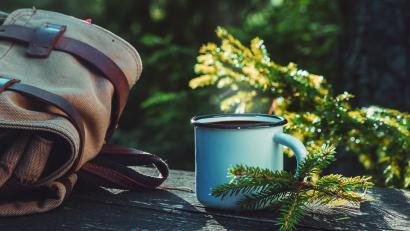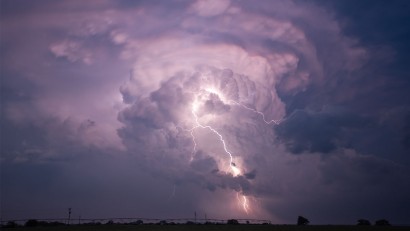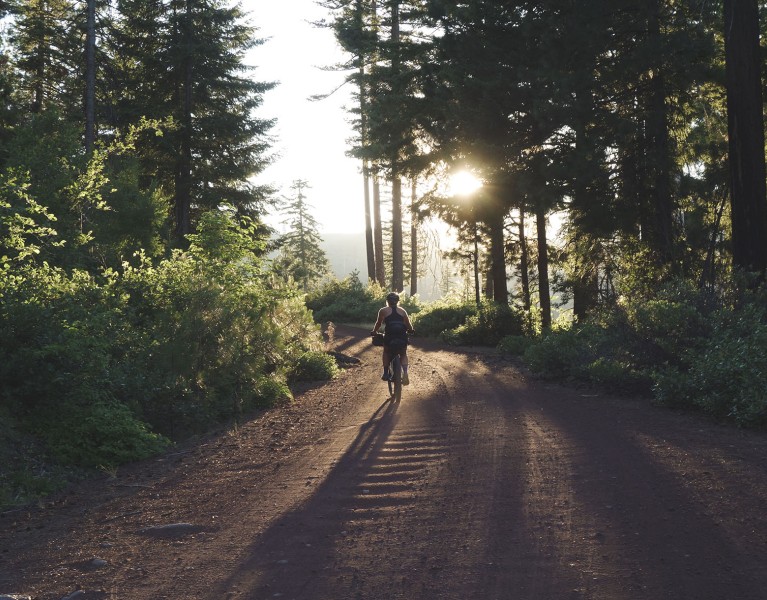
Seek New Adventures - Bike Packing
Table of Contents [Show]
Long roads, open landscapes, no traffic and fresh air are some of the cherished qualities of riding on gravel roads and packing up your bike for an overnight adventure. Bike packing is a way to travel deep into the backcountry to discover iconic, remote campsites far away from the to-do lists at home. While bike packing may seem daunting at first, there's a way to keep this epic adventure simple and approachable.
Quick Tips
Determine a local route in your area to plan your first overnight bike packing adventure. Bikepacking, Dirty Freehub and Ride with GPS are great resources to assess the gravel routes in your area. For my first bike packing tour, I chose a one-nighter local to my hometown so I could become familiar with my bike, packing, riding with weight and the general nuances of the new adventure. The terrain was partially single-track, gravel road and paved road. We found a lake midway and pitched a tent so we could take a dip in the evening and the morning. It's important to assess water sources throughout the ride, such as rivers, lakes and streams. With a lightweight water filter, these water sources become beacons of your survival, especially on extended trips.
Your bike is your most essential piece equipment, go figure! Many types of bikes will conquer the gravel roads, but if you're unsure, stop by your local bike shop to ask specific questions, get local advice, tune up your bike and purchase essential tools and gear. If you don’t have a bike, many rental shops have bikes for you to rent. Just ask! I purchased a used Salsa Cutthroat on Facebook marketplace. A hardtail mountain bike is another great option–it's the perfect type of bike to attach a frame bag to store your gear. Just remember, don’t feel the need to buy a new bike just for this adventure!
Packing for a bike packing trip feels like ultralight backpacking gear meets mountain biking gear. It’s pure art and functionality – how little can I pack, how small can I squish it and how long can I wear the same apparel. A one-night trip seemed easy considering the length was only about 50 miles, and I only had to consider packing food for two meals. REI's bikepacking gear list is a great resource; Bikepacking has a great list, too. With one other radical lady joining me, we were able to split up the tent and biking tools between our bags eliminating any duplicate items.
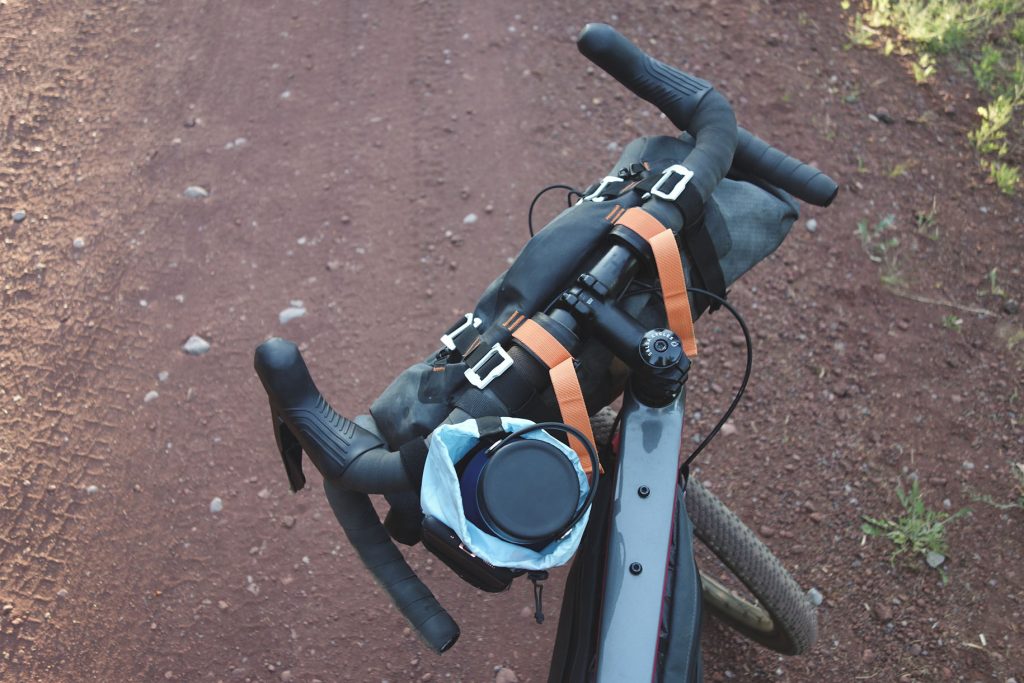
A few tips we discovered while packing:
- Check your pump and make sure the correct head fits the bike valve – presta and schrader are two different valve types.
- A light plastic water bottle is lighter than a metal bottle.
- Bring a water filter!
- Don’t forget an extra chain link, tube, and puncture plug.
- Ski straps and a dry bag on the handlebars work great if you don't have a handlebar bag.
- Strap everything to your bike including your phone! I went on an extra four mile jaunt when my phone sneakily popped out of an unsecure location on my bike.
- If you aren't able to buy or rent bike packing cargo bags, wear a backpack for gear storage.
- Carabiners and ski straps are great for securing rogue items.
Extra clothing is optional if you're concerned about weight. For this trip, I wore and packed my favorite KUHL items:
- Shorts - KUHL Vantage Short
- Shirt - KUHL Konstance Tank
- Extra Layer to keep your core warm - KUHL The One Vest
- Camp Beanie - KUHL Merino Beanie
- Under Helmet Beanie - KUHL Skull Cap
- Windbreaker Jacket - KUHL Transcendr Jacket
Eating meals in the backcountry is often the apex of the day. Whether it's heating water for oatmeal and coffee in the morning, a quick snack mid day, or sampling all of the dehydrated food options in the evening, these meals are what keeps our energy and spirits high.
- Pack your favorite nuts and quick snacks to grab and go. You don’t want to “crack” while charging miles. Keep your energy up!
- Pack a lightweight boiler and a bowl for warming hot water.
- Dehydrated breakfast, lunch and dinner kept our taste buds happy and bellies full. Food for the Soul makes tasty options for all meals, just don’t forget your lightweight spork!
- Our favorite backcountry classic meal is Annie’s mac and cheese with nutritional yeast. I savor each bite.
- Early morning pour over coffee or tea is good to warm the body and cold hands.
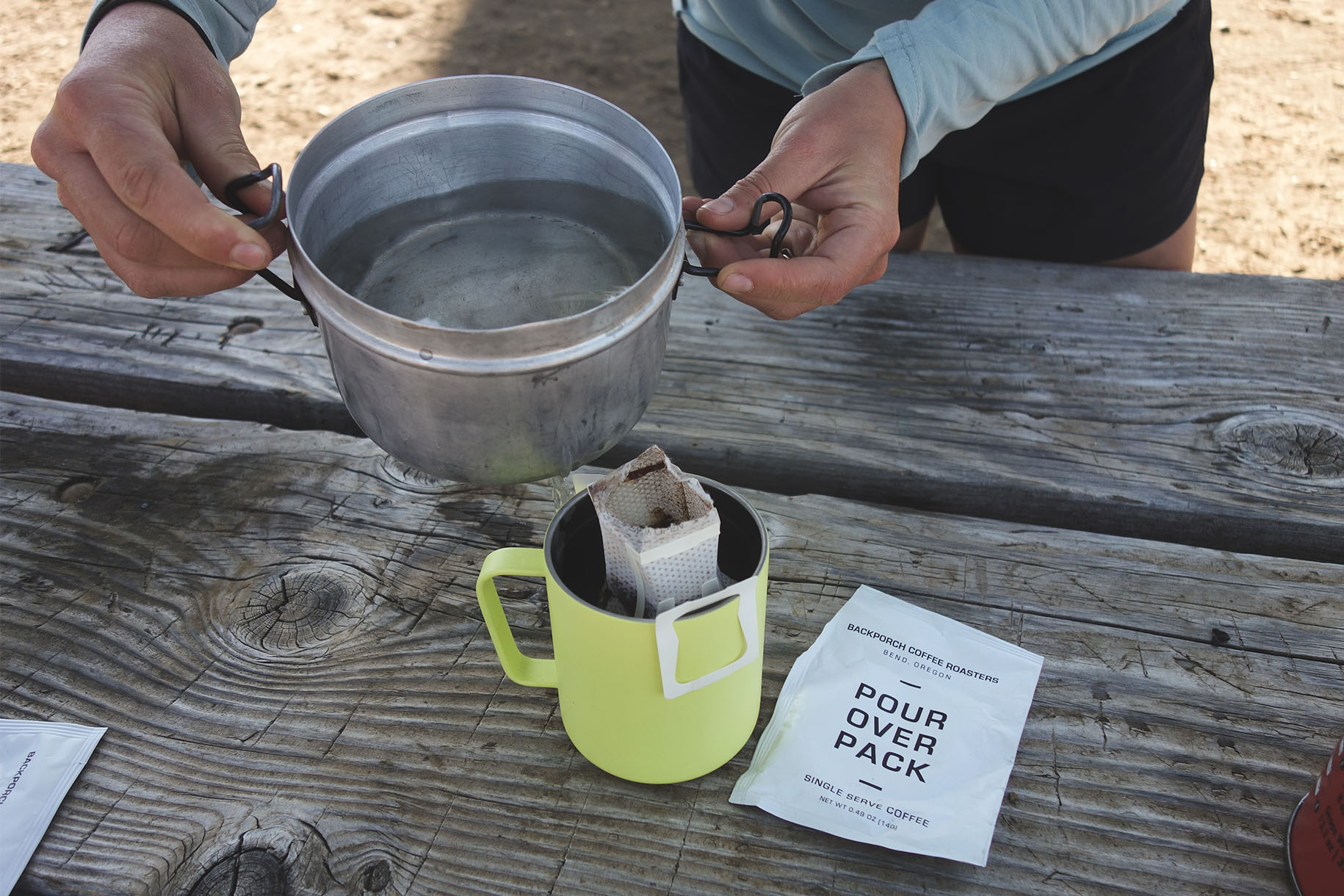
Keep it Light
Not only do you want to be aware of how much you're packing, you also want to keep your mentality light-hearted and fun. “Clown falls” are bound to happen – just pick yourself up and laugh about it. “Wrong turns” may turn into micro adventures. Just reference a map when you’re going rogue. If you hear music in the distance, maybe it’s a local band playing some evening folk music at a nearby lodge. Grab a cocktail and be spontaneous. Bike packing is a leisurely way of exploring the far out landscapes. If you’re ready to jump in, don’t hesitate. It’s an adventure welcome to all who are curious.

